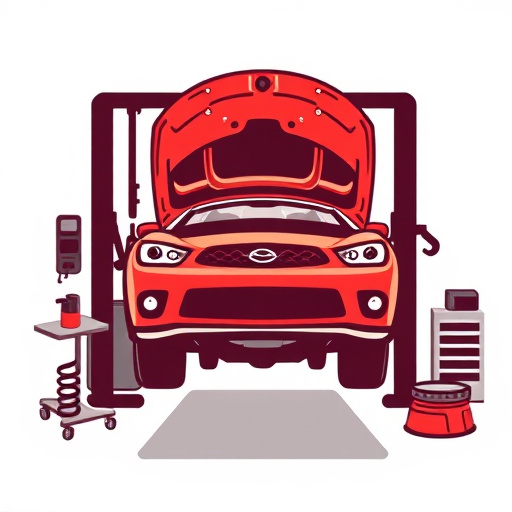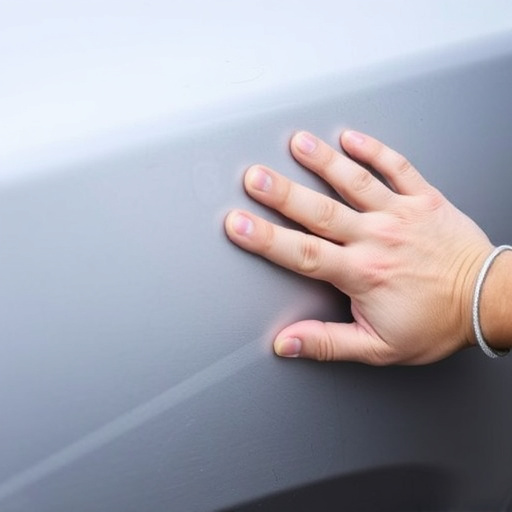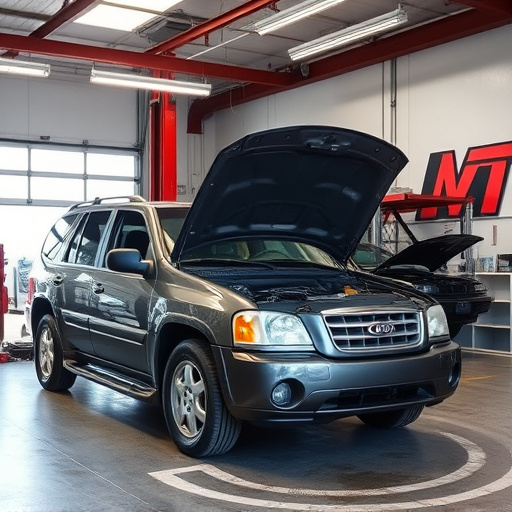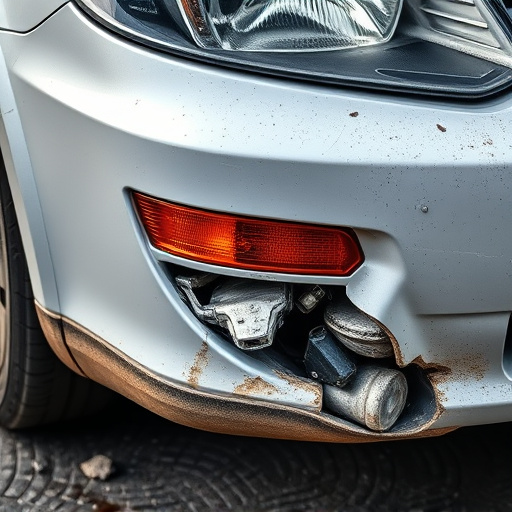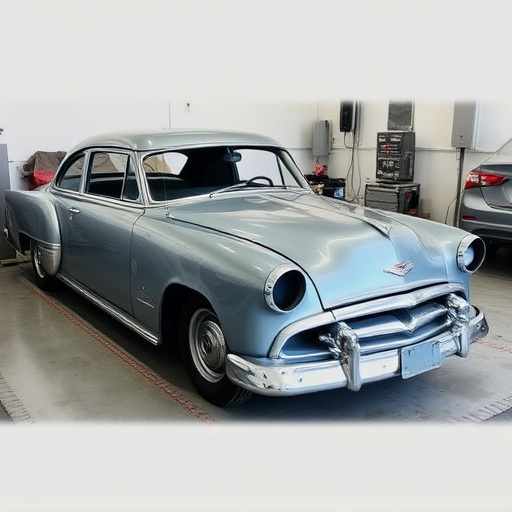The fuel system, vital for vehicle propulsion, must withstand collisions to prevent leaks that could cause immediate and secondary hazards. Conducting a thorough fuel system collision check after an accident is crucial for identifying potential risks like fires or explosions. Regular maintenance, including inspections and timely repairs at trusted collision centers, ensures the safety of drivers and mitigates post-crash dangers by protecting fuel lines and replacing worn-out parts.
“In the event of a vehicle crash, the fuel system plays a critical role in safety. Understanding the intricate components and their behavior during collisions is essential to mitigating risks. This article delves into the intricacies of the fuel system’s function in catastrophic events, focusing on post-crash assessments to identify potential hazards.
We explore best practices for ‘fuel system collision checks’, offering insights into how these checks can minimize risks and enhance vehicle safety standards.”
- Understanding Fuel System Components and Their Role in Collisions
- Post-Crash Assessment: Identifying Fuel System Safety Risks
- Mitigating Risks: Best Practices for Fuel System Collision Checks
Understanding Fuel System Components and Their Role in Collisions
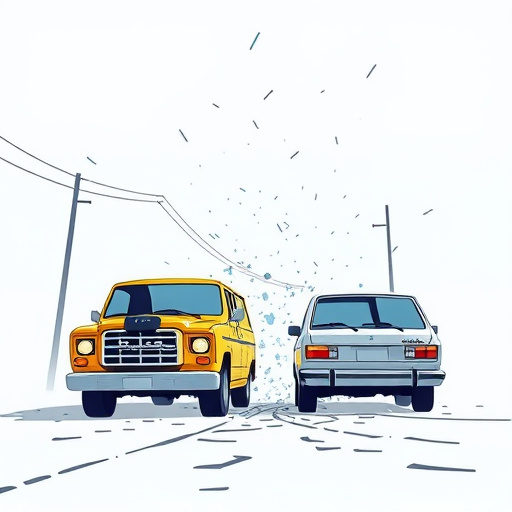
The fuel system is a critical component of any vehicle, responsible for delivering gasoline or diesel to the engine for propulsion. It consists of various parts such as fuel tanks, pumps, filters, lines, and injectors. In a collision, these components play a significant role in determining the safety risks posed to occupants and other road users.
During a crash, the integrity of the fuel system is vital. A breach in the system can lead to fuel leaks, which not only pose an immediate danger due to potential ignition sources but also create hazardous conditions post-collision. For instance, spilled fuel on exposed metal surfaces from damaged tanks or lines can cause severe burns upon impact. Additionally, the force of a collision might trigger issues like line ruptures, pump malfunctions, or filter clogs, exacerbating the risk for fire and secondary accidents. Therefore, a thorough understanding of these components and their behavior in collisions is essential for developing effective safety measures and mitigating risks, emphasizing the need for comprehensive vehicle inspections that include a detailed fuel system collision check. Proper maintenance, including regular checks and car bodywork services to protect fuel lines, can significantly enhance safety outcomes.
Post-Crash Assessment: Identifying Fuel System Safety Risks
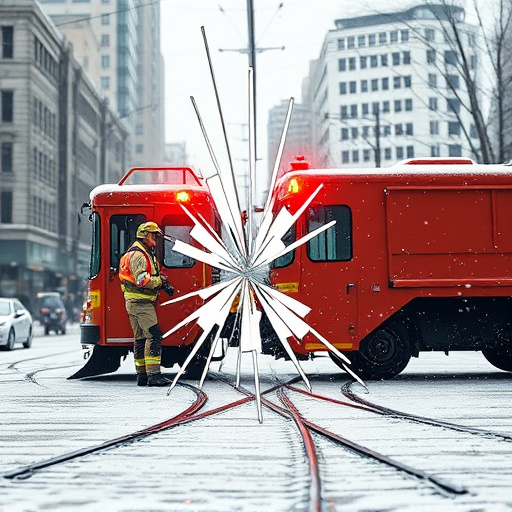
After a vehicle crash, conducting a thorough post-crash assessment is vital to identify potential safety risks associated with the fuel system. This initial check involves evaluating the overall condition of the fuel tank, lines, and components to ensure they are not compromised. Mechanics at a reliable car repair shop often play a critical role in this process by thoroughly inspecting for any signs of damage, leaks, or structural failures that could lead to fuel system failures post-crash.
During this assessment, it’s essential to consider factors like the severity of the collision and the potential impact on fuel lines and tanks. A car paint repair might not always be the immediate concern, but ensuring the safety of the fuel system is paramount, as fuel leaks can pose significant hazards, including fire risks, which could escalate the damage from a simple car repair service to a complex and dangerous situation.
Mitigating Risks: Best Practices for Fuel System Collision Checks
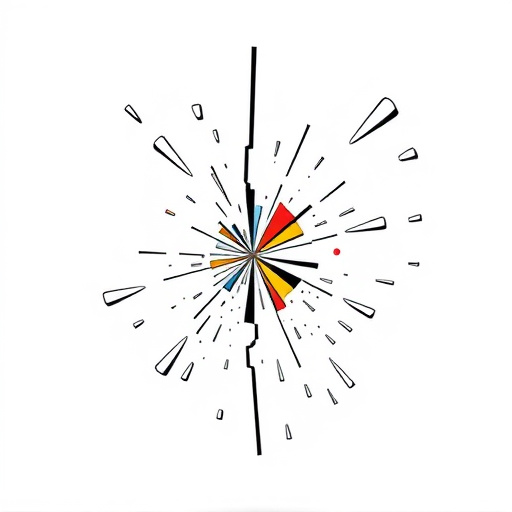
In the aftermath of a vehicle crash, mitigating risks associated with the fuel system is paramount to ensure safety and prevent secondary hazards. A comprehensive fuel system collision check involves meticulous inspection and testing to identify potential weaknesses or failures that could lead to leaks, fires, or explosions. This critical process includes visually examining components for signs of damage, checking for proper connections, and performing diagnostic tests to verify functionality.
Best practices dictate regular maintenance and timely repairs at a trusted collision center or car restoration facility. Replacing worn-out parts, such as fuel lines, filters, and pumps, is essential to restore the system’s integrity. Additionally, ensuring that all repairs adhere to manufacturer guidelines and industry standards is vital for maintaining optimal safety. By implementing these practices, vehicle owners not only reduce the risk of post-collision complications but also contribute to a smoother and safer return to the road.
In light of the above discussions, it’s clear that proper understanding and assessment of a vehicle’s fuel system components are crucial in mitigating risks post-crash. Implementing best practices for fuel system collision checks is not just a safety measure but also a critical step in ensuring the well-being of drivers and passengers. By focusing on these checks, we can significantly enhance overall vehicle safety, particularly during collisions.

